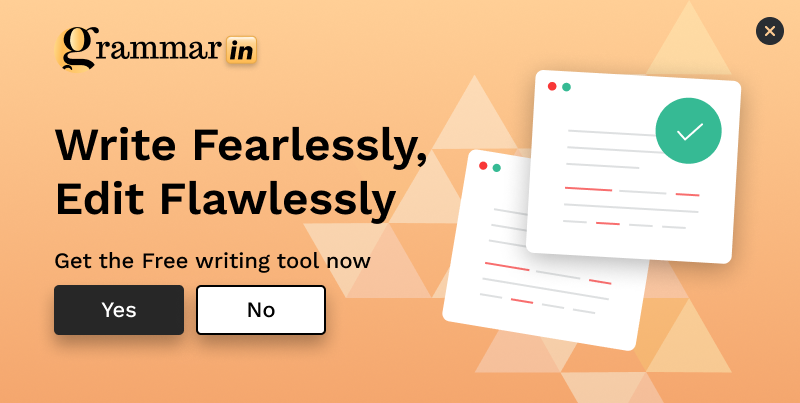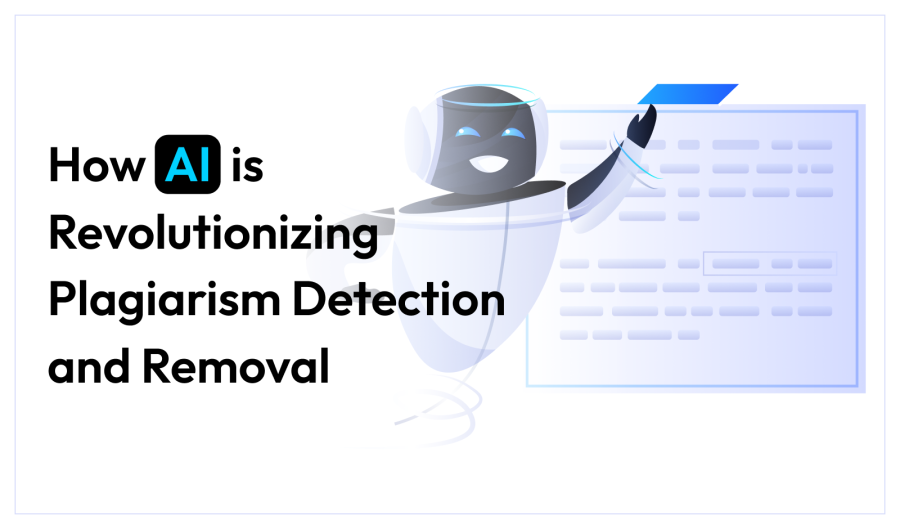Information is abundant and accessible nowadays, so the problem of plagiarism is common. However, the demand for original content is increasing. Plagiarism is the act of stealing someone else's work and presenting it as your own. And, it is a threat to the integrity of intellectual property and the creative process.
Artificial intelligence (AI) has emerged as a reliable tool for addressing this concern. AI can effectively detect instances of copied or unoriginal content by employing advanced algorithms and machine learning techniques. It can protect the originality of creative works and promote a culture of intellectual honesty.
In this blog, we will discuss the role of AI in detecting duplication in content. We will also discover ways to avoid plagiarism with tools. So, come along!
Traditional Plagiarism Detectors
Traditional plagiarism detectors have been a solution for combating the issue of content theft. These tools primarily rely on string-matching algorithms to compare submitted text against vast databases of existing content. They are effective in detecting exact copying, but they may struggle with more refined forms of duplication. Their workflow is described below.
Comparison
A basic plagiarism detector matches the submitted text against a library of content. It searches for exact matches or near matches. They calculate similarity scores based on the number and length of identical sequences. This approach is straightforward but can be intensive for large datasets.
Identification
These detectors identify instances of plagiarism by detecting sections of the text that closely match existing content. It leaves commonly used phrases and only captures the sentences that exactly match some other source.
Highlighting Duplicate Text
Traditional detectors typically highlight the duplicate text within the submitted content. That is how it makes it easy to visualize the extent of copied material. They often provide a similarity report, indicating the percentage of overlap and the source of the copied material. This information can be used to investigate and address plagiarism cases.
Removing Plagiarism
Like the typical detectors, we also have tools for removing plagiarism. These utilities are created to tweak the content to make it unique. They substitute the words in the text with their synonyms to transform the content. Some advanced ones can also change the structure of the sentence. However, they usually fail to rephrase complex topics effectively. Or, make the text too hard to read.
The usual plagiarism detectors and removers have a role in detecting and preventing duplication. However, their limitations in handling more sneaky forms of plagiarism have led to the development of more advanced AI-based solutions.
Revolution of AI Plagiarism Detectors
AI-powered plagiarism detectors have directed us to a new era of content originality. These tools offer enhanced capabilities in detecting and preventing this unethical act by leveraging advanced technologies.
Advanced Technology
AI-based detectors employ sophisticated algorithms and machine learning techniques to analyze text in a more precise way. They can understand the semantic meaning of content and commonly used phrases to detect accurately. These tools have incorporated natural language processing (NLP) techniques to assess sentence structure, word choice, and context. The cutting-edge technologies provide a more comprehensive analysis of originality.
Detecting Hidden Paraphrasing
One of the most essential advancements of AI plagiarism detectors is their ability to detect paraphrased content. Unlike outdated utilities that rely on string matching, AI tools can identify the duplicated content that is changed. It detects instances where content has been rewritten using different words or sentence structures while retaining the original meaning. This capability is particularly valuable in preventing subtle forms of plagiarism that may bypass traditional detection methods.
Better Interface
AI-powered plagiarism detectors provide a user-friendly interface that streamlines the detection process. These advanced tools provide interactive visualizations, clear reports, and intuitive navigation. This makes it even easier for users to understand the results and take appropriate action. Additionally, some AI detectors offer real-time feedback, allowing users to identify and address potential plagiarism issues as they write.
Improved Plagiarism Removers
With the revolution of plagiarism detectors, plagiarism removers also got better. AI-based plagiarism remover can assist in the plagiarism removal process. It works by suggesting alternative phrasing or providing recommendations for original content. This functionality can be particularly helpful for writers who want to ensure the originality of their work. These tools can empower writers to create unique and authentic content by offering suggestions.
You can effortlessly utilize our plagiarism remover by copying and pasting the text. Here is how to make the content unique.
- It properly paraphrases the content to make it undetectable for the plagiarism checkers.
- Changing the tone and adapting to a certain style while communicating the intended message.
- The resulting text will be unique and smooth. It removes the duplicated content without making it sound like robotic text.
- Moreover, it ensures the text maintains its readability which makes it suitable for both academic and professional use.
Limitations of AI Tools
Despite the outstanding advancements in AI-powered plagiarism detection, these tools also have shortcomings. They have transformed the way we ensure content originality, but they still face limitations.
Limited Database Coverage
AI detection tools rely on vast databases for comparison, but their scope can be limited. If a source is not part of the tool's database, plagiarism from that source may go unnoticed. This limitation is only for less accessible or newly published content.
Contextual Misinterpretation
AI tools can struggle with understanding the context of certain phrases or technical terminologies. Widely used expressions could be mistakenly flagged as plagiarism, especially in specialized fields like law or medicine.
Constant Need for Updates
As strategies for duplication evolve, AI tools require regular updates to stay effective. Without these updates, they will be unable to recognize new forms of plagiarism or sophisticated detection evasion techniques. Outdated detection tools will not be able to recognize all instances of plagiarism effectively.
AI Plagiarism Detector vs. AI Content Detector
Although, the plagiarism checker and AI content checker are based on artificial intelligence but they are different. Both of them identify certain patterns in the text. However, their function is different. Here is a breakdown of both to understand the difference.
An AI plagiarism detector focuses on identifying copied or duplicated content by comparing text against vast databases. This includes websites, articles, and other sources to find similarities. It helps ensure the authenticity and originality of written material which is essential for academic, professional, or creative purposes.
Meanwhile, an AI content detector evaluates the nature of the content. The goal is to determine if a text has been generated by AI or written by a human. This tool is important in the context of distinguishing between human-created and machine-generated content.
Both tools are valuable for maintaining content integrity, but they operate with different objectives. One to catch plagiarism, while the other to detect the origin of the content.
Wrap Up
Artificial intelligence has revolutionized all the fields in the world. One field that has revolutionized completely is content writing. Specifically, it has transformed the working of digital tools. By incorporating AI, plagiarism detectors can even identify minor instances of plagiarism. This way, it helps to maintain the integrity and authenticity of your content.
Along with the detectors, plagiarism removers have also evolved over time. They keep the ideas flowing smoothly while making the content unique. Therefore, they must be incorporated into the writing process to get the most out of it.

